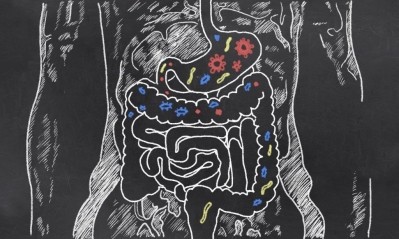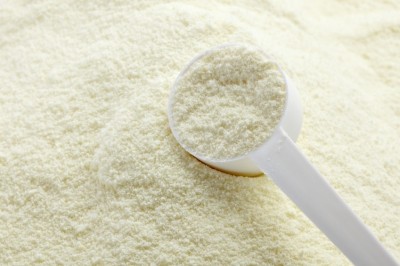FrieslandCampina’s GOS may shore up ‘leaky gut’ in the obese, study finds

The study, which received input from FrieslandCampina, found that the consumption of the ingredient galacto-oligosaccharides (GOS) powder helped increase bifidobacteria numbers in the gut.
These findings were carried out in obese patients, who are more susceptible to high permeability of the gut compared to adults of a normal weight.
Commenting on how the findings could apply to infants, Erik Torringa, product group manager at FrieslandCampina Ingredients said, “Studies in infants have shown beneficial effects of GOS on among others gut microbiota composition and defecation”.
“These new data would point to a much broader use of Vivinal GOS in food and medical applications, over and above infant nutrition.”
Additional uses could include improving intestinal barrier function in older adults with gastrointestinal symptoms.
Weight-associated disorders
Conditions such as insulin resistance, type-2 diabetes, and cardiovascular disease have been strongly linked to obesity in a relationship that some researchers think has a gut health element attached to it.
Although causation yet to be established in humans, these links suggest that gut microbes contribute to the inflammation that ultimately leads to onset of the disorder.
One way in which the gut microbiota contributes to inflammation is through changes to pro-inflammatory and immune reaction-generating bacterial compounds that can drive endotoxin numbers in the blood.
In fact, intestinal permeability has been shown to be elevated in some obese individuals and is increased by high-fat diets, potentially creating a mechanism by which the microbiota contribute to obesity.
Researchers from the Universities of Nebraska in the US and Alberta in Canada joined colleagues from Chicago’s Rush University Medical Center to recruit women and men aged 18 to 65 years with a BMI of 30–40 kilograms per metres squared (kg/m2).
GOS, IVS-1 and BB-12
A total of 114 subjects were randomly assigned to six treatments (Lactose (control), the prebiotic galactooligosaccharides (GOS) and the probiotic strains Bifidobacterium adolescentis (IVS-1), Bifidobacterium lactis (BB-12) either used on their own or as synbiotic combinations.
The prebiotic, GOS, was obtained from FrieslandCampina and contained 72.5% GOS, 22.8% lactose, and 4.7% monosaccharides (galactose and glucose).
A total amount of GOS powder was increased to 6.9 grams (g) to achieve a dose of 5g GOS with an additional 0.1g of lactose added to achieve the same weight (7.0g) as the other preparations.
The two probiotic strains (B. adolescentis (IVS-1) and B. animalissubsp. lactis (BB-12)) were portioned into sachets during the probiotic treatments.
Each contained 0.1g of probiotic powder (1010 Colony Forming Units per gram (CFU/g)), resulting in a daily dose of 1 × 109 CFU and 6.9g of lactose as a carrier/control.
Synbiotics contained 6.9g of Vivinal and 0.1g of probiotic (either B. adolescentis IVS-1 or B. animalis BB-12), for a total dose of 7.0g. Placebo samples contained 7.0g of lactose.
Subjects were provided with enough sachets for the entire length of the three-week treatment period and were instructed to consume one sachet daily, with two hours between treatment and food consumption.
This was in order to facilitate delivery of the probiotic/prebiotic compounds into the caecum/large intestine by rapid emptying of the compounds from the stomach and through small bowel.
Trial results
After 3 weeks of consumption, strain-specific quantitative techniques were performed on faecal samples to assess changes in the microbiota.
Intestinal permeability was determined by measuring sugar recovery in urine after consumption of a sugar mixture.
Results found those in the IVS-1 treatment group reached significantly higher cell numbers of bifidobacteria in faecal samples than in the BB-12 treatment group.
Its administration induced an increase in total bifidobacteria that was comparable to that of GOS.
“Although GOS showed a clear bifidogenic effect on the resident gut microbiota, both probiotic strains showed only a non-significant trend of higher faecal cell numbers when administered with GOS,” the study said.
Post-aspirin sucralose:lactulose ratios were reduced in groups IVS-1 , IVS-1 + GOS and GOS, while sucralose excretion was reduced with BB-12 and GOS.
“This indicated improvements in colonic permeability but no synergistic effects. No changes in markers of endotoxemia were observed.”
“As far as we are aware, this is the first study in humans showing that GOS improves intestinal barrier function,” said professor Robert Hutkins of the University of Nebraska.
“This provides a rationale for their use in disorders with an underlying leakiness of the gut.”
Source: Microbiome
Published online: doi.org/10.1186/s40168-018-0494-4
“Probiotic Bifidobacterium strains and galactooligosaccharides improve intestinal barrier function in obese adults but show no synergism when used together as synbiotics.”
Authors: Janina Krumbeck et al.















